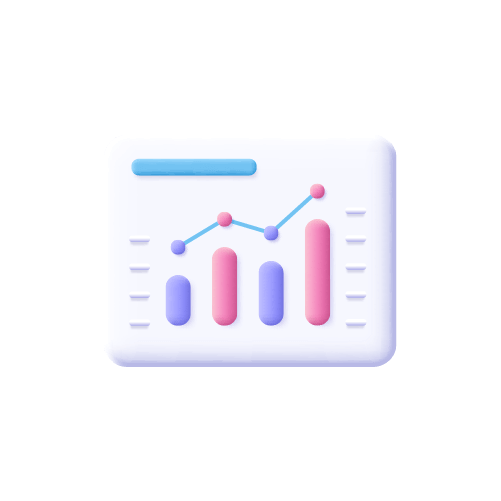FAQs
Demand generation is a marketing strategy aimed at creating interest and awareness in a company’s products or services to drive demand and generate leads. The goal is to attract potential customers and nurture them through the sales funnel until they are ready to make a purchase. It typically encompasses a variety of activities and tactics, including:
- Content Marketing: Creating and sharing valuable content (like blog posts, whitepapers, videos, and infographics) that educates and engages potential customers.
- SEO (Search Engine Optimisation): Optimising your website and content to rank higher in search engine results, making it easier for potential customers to find you.
- Social Media Marketing: Using social platforms to reach and engage with your target audience, share content, and build relationships.
- Email Marketing: Sending targeted messages to prospects and leads to nurture them and keep them engaged with your brand.
- Paid Advertising: Utilising ads on search engines, social media, and other platforms to reach a broader audience and drive traffic to your site.
- Events and Webinars: Hosting or participating in events and online webinars to connect with potential customers and showcase your expertise.
- Lead Nurturing: Implementing strategies to build relationships with leads over time, often through automated email workflows and personalised content.
Lead generation is often more tactical and short-term focused, aimed at capturing and qualifying potential customers who are already interested in what you offer. While demand generation is about creating and nurturing interest in your brand and building a pipeline of potential customers over time. Both are crucial for a comprehensive marketing strategy, but they play different roles in the customer journey. Lead generation typically includes tactics such as:
- Lead Magnets: Offering something of value (like an eBook, whitepaper, or free trial) in exchange for contact information.
- Landing Pages and Forms: Creating pages designed to capture lead information.
- Paid Ads: Targeting ads to drive traffic to lead capture forms.
- Email Campaigns: Sending targeted messages to encourage sign-ups or conversions.
Demand generation and account-based marketing (ABM) are both strategies aimed at driving business growth, but they differ in their approaches and focus. While demand generation casts a wide net to attract and nurture a broad audience, account-based marketing takes a more targeted and personalised approach, focusing on a specific set of high-value accounts. Both strategies can be complementary, with demand generation feeding a broader funnel and ABM focusing on closing deals within a more refined list of target accounts. Account-based marketing (ABM) strategies typically involve:
- Account Research: Identifying and researching key accounts that are a good fit for your products or services.
- Personalised Outreach: Tailoring marketing and sales efforts to the specific needs, pain points, and interests of each target account.
- Customised Content: Developing bespoke content and campaigns that address the unique challenges and goals of each account.
- Multi-Channel Engagement: Coordinating efforts across various channels (email, direct mail, social media, etc.) to reach and influence decision-makers within the target accounts.
- Lead Volume: the total number of leads generated within a specific period. This indicates the overall effectiveness of your demand generation activities in attracting potential customers.
- Lead Quality: the quality of leads based on their likelihood to convert into paying customers. This ensures that you’re not just generating a high volume of leads but also attracting those who are likely to be interested in and benefit from your product or service.
- Cost Per Lead (CPL): the total cost of generating a lead, calculated by dividing total demand generation expenses by the number of leads acquired. This helps assess the efficiency and cost-effectiveness of your demand generation campaigns.
- Conversion Rate: the percentage of leads that take a desired action, such as signing up for a newsletter or requesting a demo.
- Why It Matters: Measures how well your content and campaigns are converting leads into engaged prospects or customers.
- Marketing Qualified Leads (MQLs): leads that meet certain criteria indicating they are more likely to become customers based on their interactions and behaviours. This helps evaluate the effectiveness of your demand generation in producing high-quality leads.
- Sales Qualified Leads (SQLs): MQLs that have been vetted by the sales team and are deemed ready for direct sales engagement. This indicates how well demand generation efforts are aligning with sales goals and the quality of leads being passed on to the sales team.
- Lead-to-Customer Conversion Rate: the percentage of leads that eventually become paying customers. This measures the effectiveness of your entire demand generation and sales process in turning leads into customers.
- Customer Acquisition Cost (CAC): the total cost of acquiring a new customer, including all marketing and sales expenses. This provides insights into the overall efficiency and ROI of your demand generation efforts.
- Engagement Metrics: metrics such as click-through rates (CTR), time spent on site, and social media interactions. This indicates how well your content and campaigns are resonating with your audience.
- Return on Investment (ROI): the overall return on the resources invested in demand generation, calculated by comparing revenue generated to the cost of demand generation activities. This evaluates the financial effectiveness and profitability of your demand generation strategies.
- Lead Source Performance: metrics that show which channels or sources (e.g., social media, SEO, PPC) are generating the most leads. This helps identify the most effective channels for your demand generation efforts, allowing you to allocate resources more efficiently.
- Content Performance: metrics related to how well different pieces of content are performing, such as downloads, shares, and lead generation from specific content pieces. This provides insights into which content resonates most with your audience and drives the most engagement.
See what
Branded Demand
can do for you.
High-quality leads. Heightened brand awareness. Both can be yours – we’ll show you how.







